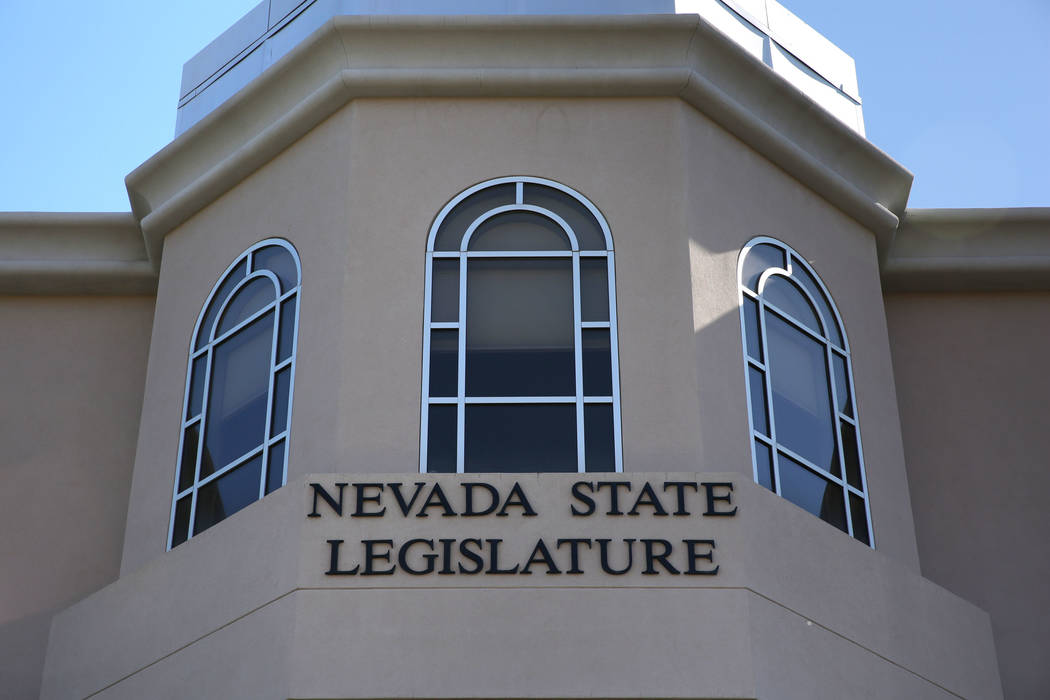
CARSON CITY — Lawmakers got a full rundown of the proposed overhaul to the state’s 52-year-old formula for funding K-12 education in the state.
The proposal comes via Senate Bill 543, called the Pupil-Centered Funding Plan, which was unveiled last week and calls for a complete rewrite of the state’s current funding formula, which was put in place in 1967.
The new formula establishes a “base funding amount” for all of Nevada’s nearly 450,000 K-12 students, but what that number will be has not been determined.
It would collect dozens of funding streams for education into one account, making it easier to dole out to various school districts and track. Also, it would create a special formula that gives extra money to children in special education or gifted and talented programs, those at or near the poverty level, or those who are learning English, no matter which school they attend.
Funneling the streams into a single account also will help lawmakers and education officials throughout the state better track how the money is spent than compared with the current plan, analyst Jeremy Aguero told lawmakers at a joint meeting of the Senate and Assembly money committees. Aguero has been working with the bill’s two prime sponsors, Sens. Joyce Woodhouse, D-Henderson, and Mo Denis, D-Las Vegas, since the start of the session to finalize the formula.
Clark County School District Superintendent Jesus Jara said in an interview before Tuesday night’s hearing that increasing the transparency from the current plan would go a long way to addressing some of the funding issues. “Right now there is a lack of transparency with the current formula. Where is that money going? And how does it get to the kids? I think this funding formula does just that,” Jara said
The new formula also creates a rainy day account specifically for education funds and walls off that extra funding earmarked for particular student groups; any money left over at the end of the year in a district’s budget couldn’t be used to cover collective bargaining agreements with labor unions.
There would be a new 11-member commission that would be tasked with overseeing the implementation of the new formula, review and make recommendations for changes to the per-pupil base and weighted funds.
“The goal is here is to make sure that the math is ultimately working,” Aguero said.
Before the hearing, Gov. Steve Sisolak issued a statement applauding Woodhouse for “introducing one of the most sweeping education reform bills Nevada has seen in over 50 years.
“Everyone can agree that we must take bold steps to improve our education system, and that must start with addressing a decades-old formula that no longer meets the needs of our state,” Sisolak said. “In the coming days, I look forward to working with the Legislature to review this bill, with the goal of ultimately taking an important step toward much-needed structural education reform.”
Two bills passed the Senate on 12-8 party line-votes Tuesday and move on to the governor’s office. Senate Bill 183 would ban private prisons in Nevada and require the state to exit out-of-state contracts with for-profit facilities by mid-2022. There are no private prisons in Nevada currently.
Under Assembly Bill 186, Nevada would enter an interstate compact among states that want their presidential electoral votes awarded to the winner of the national popular vote. So far 15 states have opted in, representing 189 electoral votes; the measure would take effect once states representing 270 electoral votes enact it. Nevada would add its six electoral votes to the total if the governor signs the measure.
Republicans opposed it, saying it would weaken Nevada’s political clout on the national stage. “To me it’s quite clear that we would become a flyover state if this went into effect,” said Senate Minority Leader James Settelmeyer, R-Minden.